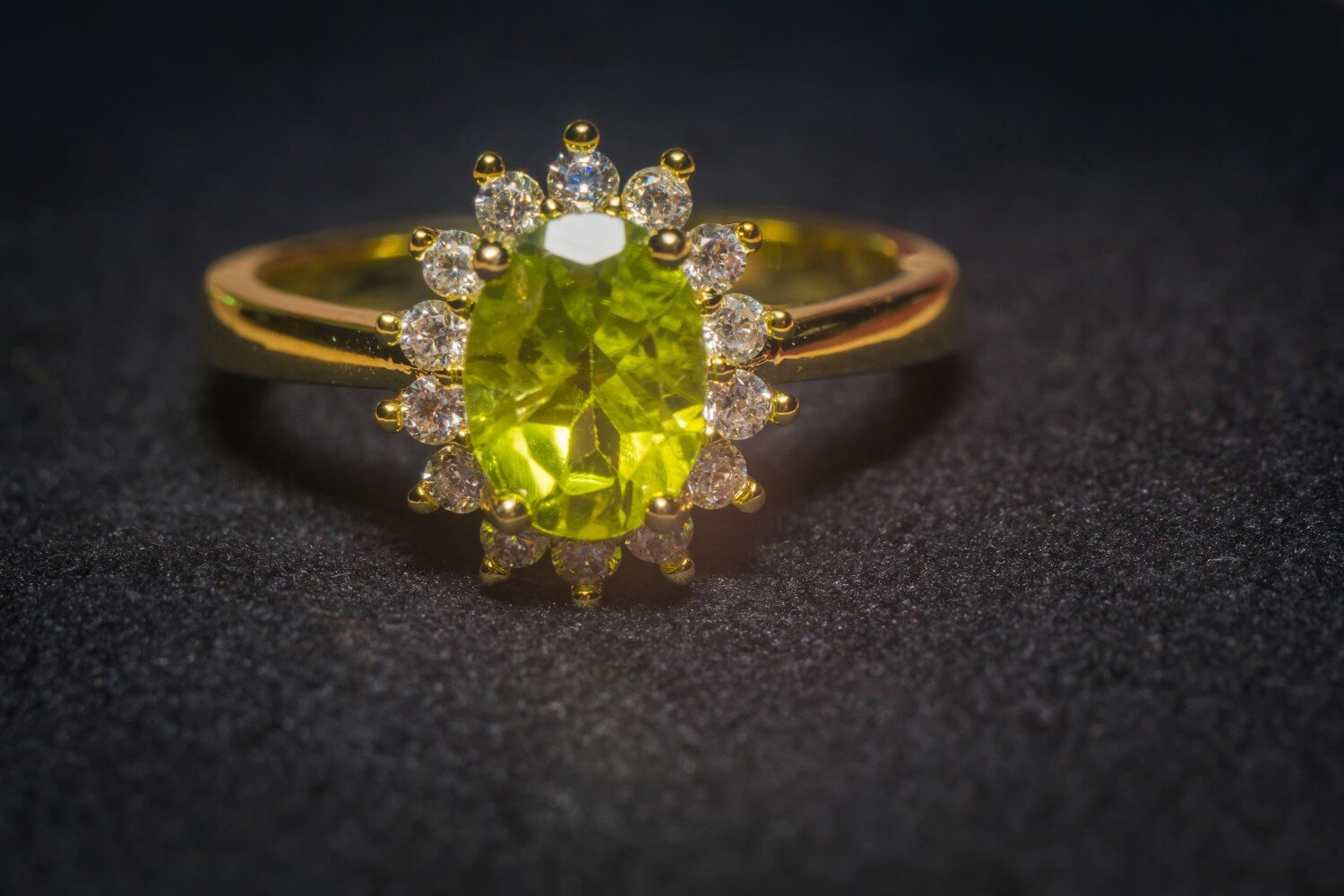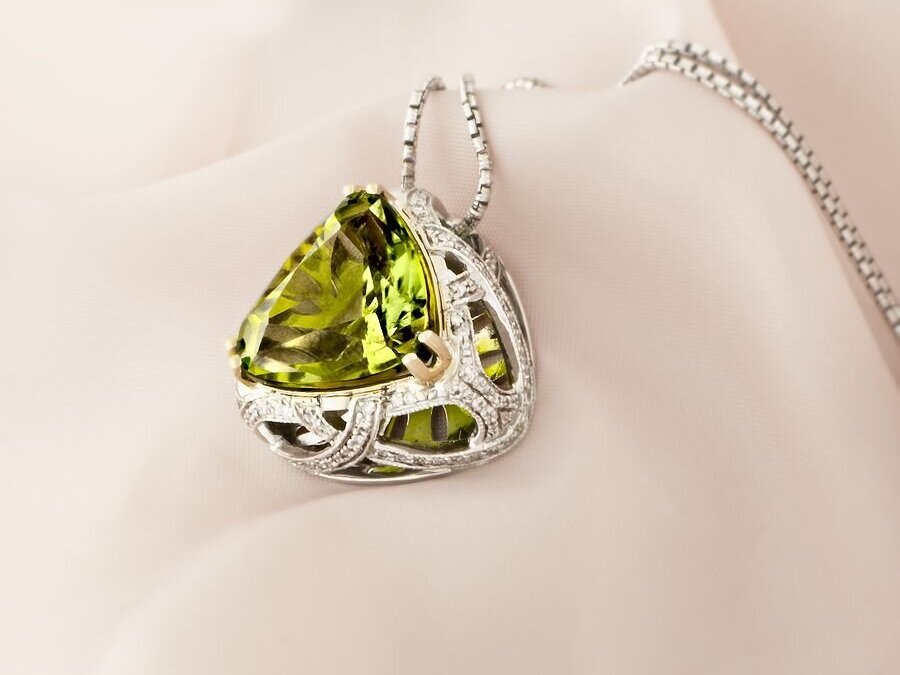
Peridot
Peridot or also Chrysolite is August birthstone and May special apostle birthstone. Peridot is so radiant that it reflects back flashes of light even if it is relatively dark. Because of this property it was linked with the sun whose bright rays it reflects against dark future.
Vintage peridot brooch
The name peridot was given to the mineral a long time ago with the 1st mentioning of this word dating back to the 13th century. The birthstone is also commonly called chrysolite meaning ‘gold stone’ when translated from Latin, the word peridot is either of French origin or is possibly derived from an Arabic word ‘faridat’ meaning ‘precious stone’. Ancient people literally called it ‘Golden stone’, and the gem was often confused with either golden topaz or emerald. A long long time ago birthstone peridot was ‘the’ precious stone valued higher than diamond.
Peridot or chrysolite is a gem quality mineral called olivine. Olivine is a common mineral; however it weathers really quickly making facet quality stone a rarity. The gemstone exists in multiple hues of one color, and it is solely a green birthstone. Arguably, the most popular peridot color shade is called ‘chartreuse’ named after a famous French liqueur Chartreuse that is made out of about 150 herbs and comes in green color.
This gem is often found in meteorites. On earth it occurs in Canada, the USA, Mexico, Australia, Brazil, South Africa, Egypt, Kenya and other places.
Peridot white gold charm
Pendant set with peridot (chrysolite) gems
Pliny, military commander and philosopher in the Roman Empire, mentions a legend according to which peridot comes from a mysterious island of the Mists. The island was also referred to as ‘Serpent isle’ and was located in the Red Sea with the best peridot specimens found delivered directly to the Pharaohs of Egypt. An ancient Greek historian Diodorus of Sicily mentioned another legend telling that the island was guarded by soldiers who had the orders to kill anyone approaching it. Even those who had the authorization to rock hound had to do it at night because only in the dark would chrysolite reveal its location by radiating light.
Dr. Herbert Smith, who developed scientific methods for the identification of gemstones and worked at the British Museum, wrote about green peridot as “bearing the pretty name of “the evening emerald,” and the most charming specimens resemble the light green of the sea waters near the shore, illuminated by the setting sun.”
Peridot was a popular gem in ancient Egypt and was meant to protect the wearer from the dangers lurking in the darkness. In the 15th century it was concluded that birthstone peridot was supposed to be set in gold and used as a night talisman. It was popular to wear this birthstone as earrings as its power over light was also relevant to sound, and it made even the lightest whisper very audible. It was also believed to scare evil spirits away.
In ancient India, birthstone chrystolite was considered a gemstone of love that could help strengthen the feelings and reach partner understanding. Mongols called peridot ‘the dragon stone’ and believed in its ability to give courage and strength.
Post-biblical writers gave this birthstone ‘the gem of miracles’ name. The gemstone was thought to protect against obsession, illusion, despair, madness, as well as strengthen the sole and provide inspiration and prophecy. Medicinally, the gemstone was used to cure asthma and fever.
If worn as a birthstone by a man, peridot was meant to ensure generosity towards his wife. Countless number of wives forced their husbands to wear peridot rings. Dreams of chrysolite are believed to mean necessary caution.
Chrysolite was widely traded during the Crusaders time and was often called emerald. One of the most stunning peridots is set high in the Cologne Cathedral. American Museum of Natural History also has remarkable peridot specimens.
Peridot is a birthstone of Meghan Markles, and she can often be seen wearing it. Jeff Goldblum was photographed wearing Tiffany and Co. brooch set with peridots.

